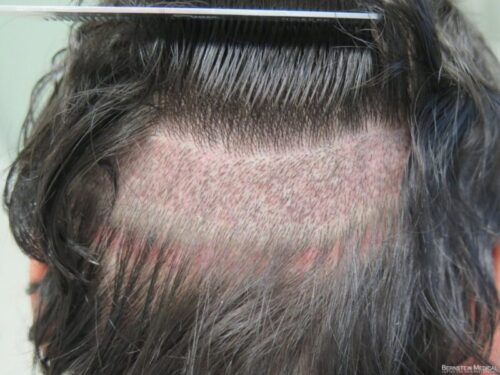Undergoing a Follicular Unit Transplantation FUT Hair Transplant in Dubai is a significant step towards restoring hair and boosting confidence. However, the post-operative phase is crucial for ensuring optimal results. Proper care after the procedure can greatly influence the growth and health of the transplanted hair. This guide outlines essential post-operative care tips for FUT hair transplant patients.
1. Understanding the Importance of Post-Operative Care
After an FUT procedure, the scalp requires time to heal and for the transplanted hair follicles to establish themselves in their new environment. The post-operative care regimen aims to minimize complications, enhance healing, and support the growth of healthy hair.
2. Immediate Post-Operative Instructions
2.1 Rest and Recovery
- Take Time Off: It’s recommended to take at least a few days off from work and any strenuous activities. Allow your body to rest and recover from the procedure.
- Elevate Your Head: Sleep with your head elevated for the first few nights. This helps reduce swelling and promotes blood circulation to the scalp.
2.2 Avoiding Strenuous Activities
- Physical Activity: Avoid heavy lifting, exercise, or any activities that could strain your body for at least one week post-surgery. Strenuous activity can increase blood flow to the scalp and lead to complications.
3. Wound Care and Hygiene
3.1 Keeping the Scalp Clean
- Shampooing: Avoid washing your hair for at least 48 to 72 hours after the procedure. After this initial period, use a mild, sulfate-free shampoo to gently clean the scalp.
- Gentle Application: When washing your hair, avoid rubbing the transplanted area. Instead, let the shampoo flow over the scalp gently. This prevents dislodging the grafts.
3.2 Protecting the Grafts
- Avoid Touching: Do not touch, scratch, or pick at the transplanted area. This can lead to infection or damage to the newly implanted follicles.
- Use of Caps or Hats: If recommended by your surgeon, you may wear a loose-fitting cap or hat to protect the grafts from sunlight and debris for the first few days.
4. Managing Discomfort and Swelling
4.1 Pain Management
- Medication: Your surgeon may prescribe pain relievers or recommend over-the-counter medications to help manage discomfort. Follow their instructions regarding dosage and frequency.
4.2 Reducing Swelling
- Cold Compresses: Applying cold compresses to the forehead (not directly on the grafts) can help reduce swelling. Use ice packs wrapped in a cloth to avoid direct contact with the skin.
5. Diet and Hydration
5.1 Balanced Nutrition
- Healthy Diet: Consume a balanced diet rich in vitamins and minerals to support healing. Focus on foods high in protein, vitamins A, C, D, and E, and omega-3 fatty acids.
- Avoid Alcohol and Caffeine: For at least a week post-surgery, limit or avoid alcohol and caffeine, as they can dehydrate your body and slow down the healing process.
5.2 Stay Hydrated
- Drink Plenty of Water: Staying hydrated is crucial for recovery. Aim for at least 8 glasses of water daily to help maintain skin elasticity and promote healing.
6. Follow-Up Appointments
6.1 Schedule Check-Ups
- Post-Operative Visits: Attend all follow-up appointments as scheduled by your surgeon. These visits are essential for monitoring your healing progress and addressing any concerns.
6.2 Reporting Issues
- Alert Your Surgeon: If you experience excessive bleeding, severe pain, or signs of infection (redness, warmth, discharge), contact your surgeon immediately.
7. Hair Care After FUT
7.1 Hair Products
- Avoid Harsh Chemicals: For at least two weeks post-surgery, avoid hair products containing harsh chemicals, alcohol, or fragrances that could irritate the scalp.
- Minimize Heat Styling: Refrain from using hair dryers, straighteners, or curling irons for at least two weeks to prevent heat damage to the newly transplanted hair.
7.2 Combing and Styling
- Gentle Combing: When you begin to style your hair again, use a wide-toothed comb to avoid tugging at the grafts. Be gentle when handling the transplanted area.
8. Long-Term Hair Care
8.1 Continued Maintenance
- Regular Haircuts: After the initial healing period, you can resume regular haircuts. Consult with your stylist about the best way to maintain your new hair without damaging the grafts.
8.2 Nutritional Supplements
- Consider Supplements: Your doctor may recommend specific supplements, such as biotin or other vitamins, to support hair health and growth.
9. Patience and Realistic Expectations
9.1 Hair Growth Timeline
- Understanding the Timeline: Be patient as you wait for your new hair to grow. Initial hair growth usually starts around 3 to 4 months after the procedure, with full results visible at 12 to 18 months.
9.2 Mental Well-Being
- Manage Expectations: While it’s natural to be excited about the results, remember that the process takes time. Maintaining a positive mindset can enhance your overall experience.
10. Conclusion
Post-operative care is essential for the success of an FUT hair transplant. By following these guidelines, you can ensure proper healing and maximize the growth potential of your new hair. Always consult your surgeon for personalized advice and address any concerns you may have during the recovery process. With the right care, you can look forward to enjoying the benefits of a fuller head of hair and increased confidence.






Comments